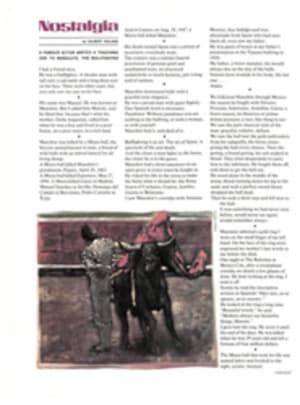
'BASEPATHS' USES BALLPLAYERS' OWN STORIES TO SHOW PATHS TO THE PROS
A career in sports is the dream of countless teenagers—now, perhaps, of nearly as many girls as boys—and a shelf of books has been written to foster or discourage the attempt to live that dream. Most of these books fail because they try too hard to sell a particular point of view. Marc Gunther's Basepaths (Charles Scribner's Sons, $14.95) takes a different approach, and the result is a far more interesting book.
Gunther, a reporter for The Hartford Courant, set out to pinpoint the stages in a professional baseball career by interviewing 10 players—from Marc Heyison in his first year with the Bluefield Orioles in the rookie Appalachian League to Catfish Hunter, retired and farming near Hertford, N.C. Gunther's prose is pleasant and uncomplicated. Virtually all of Basepaths is based on conversations that took place in 1982 and '83, as well as his own observations over the years. But the book is primarily aimed not at fans seeking glimpses into the lives of established and potential stars but at younger readers—as well as their parents—seeking guidance about careers in sport.
It's effective in this regard precisely because it doesn't attempt to persuade one to follow one path or another; it's not a how-to or a don't-try book, but a here's-what-it's-like book. And Gunther's choice of athletes with widely varied backgrounds and levels of skill adds to Basepaths' validity. Here are Oil Can Boyd and Paul Hundhammer with the Bristol (Conn.) Red Sox, Boyd learning the difference between being a thrower and a pitcher, and Hundhammer finding out how far intelligence and dedication, rather than raw talent, can take him. Gunther catches Ron Darling on the verge of stardom with the Tidewater Tides, and Ron Kittle enjoying stardom in his first season with the White Sox. And so on, through appropriate stages, with Bill Almon, Steve Kemp, Ferguson Jenkins, Bill White and Hunter. Each chapter is agreeable enough, and Base-paths succeeds because of the sum of its parts.

